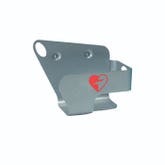Where Should I Place My AED?
- Mar 2, 2020

Finding the best location for your AED
Where should you place your AED? Where people will see it and be able to access it (quickly!) in the event of an emergency.
There are over 3 million AEDs in public spaces across the country — which looks impressive at a glance, but it’s not nearly enough. Not only that, but many of these AEDs are tucked in drawers and hidden behind locked doors.
Don’t hide your AED! Read on to find the best location for your AED.
The American Red Cross has found that it takes an average of 8-12 minutes for first responders to arrive on the scene after 911 is called. For each minute defibrillation is delayed, survival odds are reduced by approximately 10%.
In other words, by the time the EMTs arrive, it may be too late. If you have an AED, you want people to use it ASAP.
It’s all about location, location, location.
The best location for your AED is a highly visible location
Are you ready? Here’s the number one tip for effective AED placement: make it visible! It may sound obvious, but hiding your valuable AED in a corner or stowing it in an office drawer isn’t going to do anyone any good. While it may be tempting to keep your expensive medical equipment “out of harm’s way,” it’s far more important to make sure your AEDs are visible and are in good working order.
Your AED should be kept in a clear location
A “clear location,” you ask? What’s that? How is that different from a highly visible location? What we mean here is: keep it simple. When someone shouts “Where’s the AED!?” You need to respond quickly and clearly: “in the lobby by the front desk” or “by the elevator!”
Do you have enough AEDs for your organization?
We’re so glad you purchased an AED, but do you have enough of these life-saving devices to keep your workers or members safe? Most AED manufacturers recommend that buildings have at least one AED per floor.
As you consider your options for the best location for your AED, think about high-traffic areas or areas where someone is most likely to go into sudden cardiac arrest. If your office has a gym, it’s a good idea to have an AED in the workout room!
Keep in mind that you’ll want rescuers to obtain an AED and begin the rescue in less than two minutes. So enlist a colleague to play the “victim” and then grab a stopwatch and start sprinting. You’ll want to be able to assess the need for an AED, find one, return to the victim, and apply the device in just 120 seconds. Go!
If you’re not sure where to place your AEDs, Cardio Partners offers Cardiac Preparedness Consulting Services.
Signs, signs everywhere there’s AED signs
Standardized AED signs and cabinets should mark AED locations and direct users to the device.
Again, rescuers should offer assistance to a victim of an SCA in under two minutes. Make it easier for them to do so by investing in bright signage. This isn’t the time for an office scavenger hunt.
AED accessibility is super important!
Your AED cabinet should be mounted in an unobstructed area, 48 inches above the floor, to ensure that anyone can access it — even those who are in wheelchairs — in the event of an emergency. Make sure that your employees can reach and remove the AED with one hand to minimize response time.
Your AED Placement Checklist:
-
Are your AEDs are located in a clearly marked, brightly illuminated, and unobstructed location?
-
Are your AEDs easy to reach and remove with one hand?
-
Have you mounted your AED in accordance with ADA guidelines?
-
Have you offered CPR and AED training for your employees?
-
Do you have an AED Compliance Management program or a Preventative Maintenance Program?
-
Do you have bleeding control kits, first aid kits, non-latex protective gloves, CPR face masks, scissors, safety razors, and absorbent towels near your AED?
To learn more about our AED training courses or to purchase an AED, call our team at 800-544-0004 or email Cardio Partners at customerservice@cardiopartners.com.
DISCLAIMER: Information and resources found on the cardiopartners.com and aed.com websites/blogs is intended to educate, inform, and motivate readers to make their health and wellness decisions after consulting with their healthcare provider. The authors are not healthcare providers. NO information on this site should be used to diagnose, treat, prevent, or cure any disease or condition.











 CALL US:
CALL US: